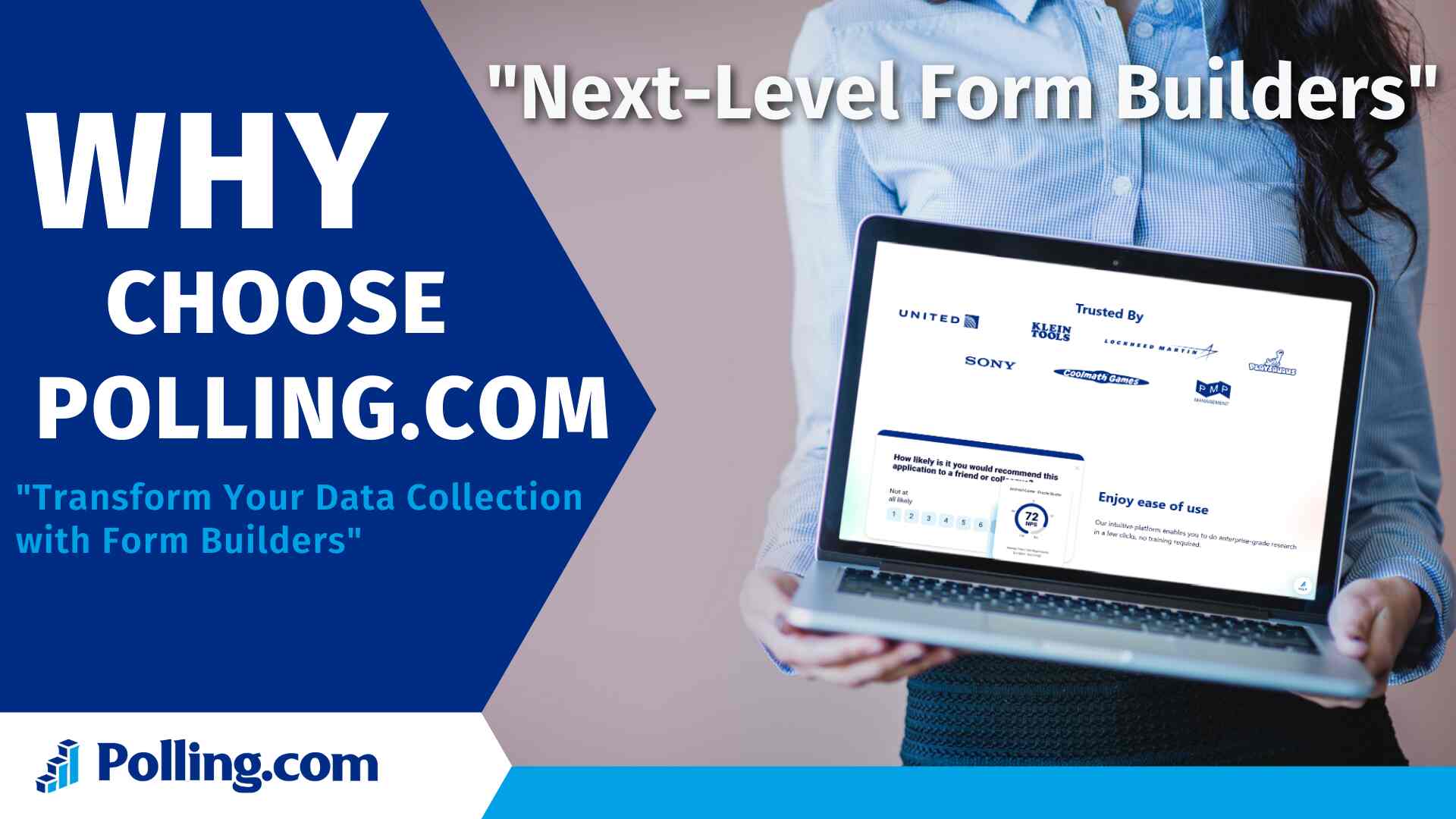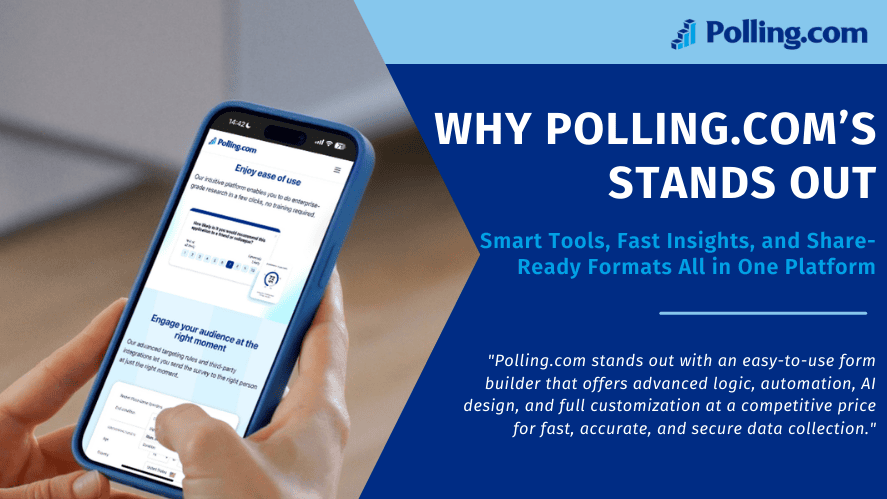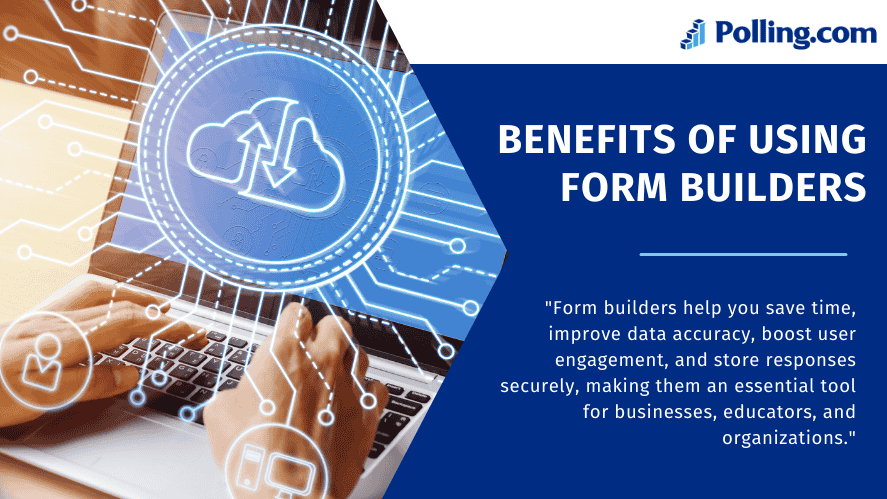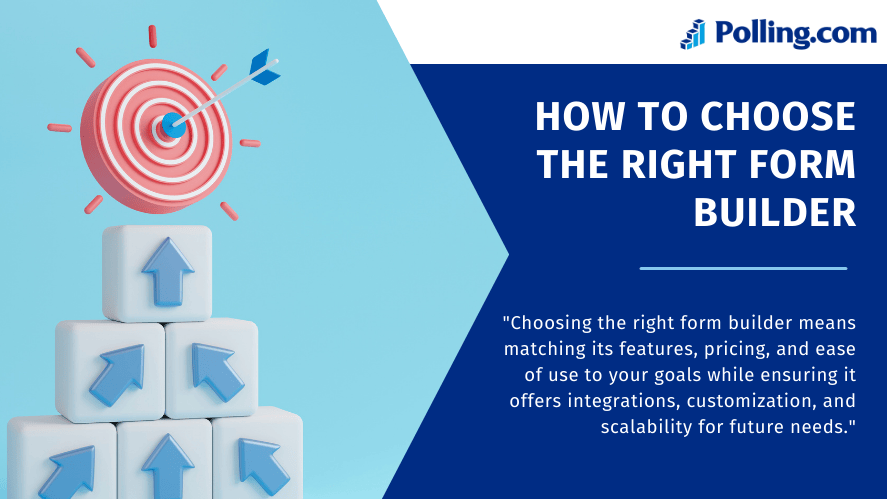
Form Builders That Transform How You Collect and Use Data
Form builders are changing how businesses, educators, and organizations collect and use information. Have you ever struggled with low response rates or messy survey data? Many people face the same challenge. Traditional forms often fall short. They can be boring, confusing, or hard to manage. That’s why modern form builders have become so valuable.
The right platform lets you build tailored forms quickly and easily. You don’t need to know how to code. Even better, today’s tools come with smart features like automation, conditional logic, and real-time reporting. These improvements make it easier to collect clean, useful data.
But with so many options out there, how do you know which one to choose? And what makes a good form builder stand out? In this guide, we’ll explore how form builders can help you work smarter and improve your data collection.
What Are Form Builders and Why They Matter

A form builder is a software solution that allows users to create online forms with ease. These forms can be used for many tasks, such as collecting survey responses, signing up for events, capturing leads, or gathering customer feedback.
Compared to simple form tools, modern form builders offer greater flexibility. You can adjust the layout, apply smart logic, and link your form to other apps or systems. These features make forms more helpful and easier to complete.
Many users begin with platforms like Google Forms to handle basic form creation. It works well for simple needs. But if you want more design options, advanced logic, or automation, you’ll need something more powerful. Many businesses eventually look for Google Forms alternatives that offer those features.
In recent years, more users have switched to free online form builders. Most of these tools are quick to use, highly adaptable, and available at no initial cost. They are much better than collecting data by hand or using spreadsheets. Whether you run a small business, a school, or a nonprofit, a modern form builder can save time and improve results.
Key Features of Modern Form Builders
So, what makes a form builder truly useful? Let’s look at the features that help you create better forms, collect better data, and deliver a better experience.
Drag and Drop Builder
Most popular form builders now include a drag and drop editor. This tool lets you design a form by dragging fields into place. It is fast and easy to use, even for beginners.
You can add short answers, checkboxes, dropdowns, ratings, or dates in just a few clicks. This is very helpful when you are building a form from scratch. You can change the layout, update questions, and test the form without writing any code.
Even many free form builders include drag and drop tools. This feature is one of the main reasons people choose digital forms over paper forms.
Custom Branding
When people fill out your form, it should feel like part of your brand. That’s why form customization is important. You can add your logo, use brand colors, and select custom fonts to match your website or documents.
Some form builders also let you use your own domain name, which adds a professional touch. If you are using forms for customer service, lead capture, or hiring, branding helps build trust.
Conditional Logic
With conditional logic, your form reacts to the user’s answers. If someone chooses “No” to a question, the form can skip the next one. If someone selects “Yes,” the form can display extra questions.
This intelligent function helps streamline your form by only showing relevant questions. It also helps improve the user experience. Fewer questions mean higher completion rates.
A form builder with conditional logic is a must if you’re collecting detailed or personal data. It also helps when different users need to answer different questions.
Multi-Device Compatibility
More than half of users fill out forms on their phones. That’s why multi-device compatibility is essential. A good form should work on desktops, tablets, and smartphones without issues.
Many free web form builder tools already include mobile-friendly layouts. Still, it’s important to test your forms on mobile, tablet, and desktop before making them live. A broken form can lead to lost responses.
Integration with Business Tools
Your form becomes even more powerful when it connects to your other tools. You can automatically route new entries to your CRM, update a Google Sheet, or launch follow-up emails using marketing tools.
These integrations save time and reduce manual work. For example, a form builder with automation features can send thank-you emails, assign tasks, or update customer records automatically.
If your business uses many apps, look for a tool that supports Zapier or built-in integrations.
Security and Privacy Controls
Every time you collect data, especially personal information, you need to protect it. A strong form builder will offer security features like encryption, access control, and compliance with rules like GDPR or HIPAA.
If you’re using forms in healthcare, HR, or education, make sure the platform offers these safeguards. Users are more likely to fill out your data collection form if they trust that their information is secure.
Why Polling.com’s Stands Out

There are many form tools available, but few offer the full set of features that the Polling.com form builder does. Whether you’re running a survey, building a registration form, or gathering feedback, Polling.com makes the process simple and powerful.
Below are the key reasons why the Polling.com survey platform stands out among the best form builders available today.
Custom Templates for Any Purpose
You don’t have to start from scratch. Polling.com offers ready-made templates for surveys, feedback forms, registrations, and more. These templates are designed for real use cases, and you can easily edit them to suit your specific goals.
This saves time and ensures your forms are professional and ready to use right away.
Real-Time Analytics and Insights
Polling.com gives you access to dashboards that show live results. You can track responses in real time without waiting for the form to end. You can spot trends and act immediately.
This is especially helpful for businesses, marketers, and event managers who need fast, data-driven decisions.
Unlimited Questions and Responses
Some tools limit what you can do on a free plan. That’s not the case here. Even the free version of Polling.com allows unlimited submissions and an unlimited number of questions.
This makes Polling.com one of the best free online form builder tools for teams and professionals who need room to scale without extra cost.
Easy Data Export Options
Collected form data often needs to be shared or analyzed. Polling.com lets you export entries to Excel, CSV, or Google Sheets with just a few clicks.
You can also send data to other platforms or dashboards for deeper analytics or reporting.
Better Value Compared to Other Tools
Polling.com offers more features at a lower price when compared to competitors like Typeform, Jotform, or the Google form builder.
If you’re searching for a reliable and flexible Google Forms alternative, this platform delivers strong value and performance.
AI-Powered Form Suggestions
Need help creating a form? Polling.com includes AI-powered form builder tools that help you get started fast. Just describe what you want the form to do, and the system will suggest the right structure and questions.
This is perfect for teams who want to build online forms with AI assistance.
Chat-Like, Conversational Forms
Many users prefer a more engaging experience. Polling.com offers conversational form builder software features that turn traditional forms into simple, one-question-at-a-time experiences.
This format increases completion rates by making forms feel more personal and interactive.
Smart Logic and Automation Tools
Polling.com supports complex logic flows. You can use its online form builder for advanced logic to set up rules, skip questions, and control what the user sees based on their answers.
Combined with its form builder with automation features, you can create smart, hands-off workflows.
Full Branding and Customization
Polling.com gives you full control over your form’s appearance. From branding to layout, you can customize everything including messages, logos, and colors using flexible templates.
Your forms will always match your business identity and feel professional.
Designed for Fast, Scalable Data Collection
Whether you’re collecting feedback, running a quiz, or managing event registration, the Polling.com data collection system helps you do it better and faster.
It’s designed to adapt to your needs today and scale alongside your team or business.
Benefits of Using Form Builders

Modern form builders do much more than gather information. They help you improve workflows, collect better data, and make decisions faster. Below are the key benefits that explain why so many professionals now rely on them.
Time and Cost Efficiency
Creating forms manually takes time. You have to print, distribute, collect, and process the responses. Then, you usually enter the data by hand. This process is slow and expensive.
With a digital form builder, you can build and launch a form in minutes. Most tools include templates, so you do not need to start from scratch. Also, some free form builders offer enough features for basic needs. That saves you money, especially for small teams or one-person operations.
Improved Data Accuracy
Manual data collection increases the risk of mistakes. People often enter wrong information or skip questions. Sometimes, handwriting is hard to read. These issues lower the quality of your results.
Modern tools solve these problems. For example, a data collection form can have required fields, dropdowns, or date pickers to prevent errors. You can also limit the type of input in each field, such as numbers only.
As a result, your data is cleaner, more complete, and easier to analyze.
Increased Engagement
No one wants to complete a long, confusing form. If your form feels like a chore, people will leave halfway through. A good form should feel easy and even enjoyable.
This is where features like conversational form builder software come in. They display questions one by one, using a messaging-style layout that feels like a conversation. That makes the process feel more personal.
In addition, conditional logic keeps the form relevant to each user. For example, if someone says they are not attending an event, the form can skip the RSVP section. This improves user experience and increases completion rates.
Centralized Data Storage
When using tools like forms builders, all your responses are stored in one place. Responses can be reviewed through a dashboard, downloaded to a spreadsheet, or forwarded to other tools for further action.
This is much better than managing multiple email attachments or paper files. It also means your data is more secure and easier to organize.
With a form builder with customizable templates, you can manage all your forms in one platform and customize them based on department, team, or campaign.
Real-Time Insights
One of the biggest advantages of digital forms is real-time feedback. With the Polling.com survey platform, you can see responses as they come in. That helps you identify patterns, respond quickly to issues, or make live decisions during events or campaigns.
For example, during a product launch, you might notice that customers keep asking the same question. You can then update your FAQ or marketing page immediately.
This speed gives you an edge over competitors who rely on slow, outdated data collection methods.
Industry-Specific Use Cases for Form Builders
Form builders are flexible tools. They can be used in almost every industry. Below are examples of how they help professionals in real-world scenarios.
Business and Marketing
In business, collecting customer data is key. Whether you’re capturing leads or learning about your audience, a form builder for lead generation helps you grow faster.
Common use cases include:
- Contact or inquiry forms on landing pages
- Newsletter sign-up forms
- Customer satisfaction surveys
- Event registration pages
- Product interest forms
When you connect your forms to a CRM or email tool, the process becomes even smoother. A form builder with automation features can help you send welcome emails, follow up with leads, or tag users based on their answers.
Education
Schools, universities, and training centers use forms every day. From managing applications to tracking student progress, form tools save time and reduce paperwork.
Examples of use cases:
- Student enrollment forms
- Scholarship applications
- Course evaluation surveys
- Parent-teacher meeting sign-up sheets
- Virtual learning feedback
For schools with limited budgets, free online form builders offer a practical solution. Many of these tools also support form customization, so you can brand your forms with school colors and logos.
Human Resources
Human Resources departments rely on form builders for recruiting, employee onboarding, and gathering team feedback. With a single tool, they can collect applications, manage employee feedback, and run anonymous surveys.
Here are some ways HR teams use forms:
- Job application and interview forms
- Onboarding checklists
- Training feedback
- Exit surveys
- Employee engagement forms
A form builder with conditional logic is useful here. It helps tailor the questions based on job role or department, making the form more relevant and efficient.
Government and Nonprofits
Governments and nonprofits often deal with high volumes of forms. These may include public surveys, program applications, or volunteer registrations.
Use cases:
- Public feedback surveys
- Program application forms
- Donation interest forms
- Event sign-ups
- Census or demographic data collection
Since budgets can be tight, many of these groups look for a free Google Forms alternative that still offers privacy, logic-based flows, and reporting.
Healthcare
In healthcare, the ability to collect and protect sensitive data is crucial. With a secure form builder, clinics and hospitals can manage data while staying compliant with privacy laws.
Use cases include:
- Patient intake forms
- Appointment booking
- Post-visit feedback
- Insurance claims
- Health screenings
Some AI-powered form builder tools even help create medical questionnaires by analyzing common intake workflows. This can reduce staff workload and improve patient experience.
E-commerce
Online businesses use form builders to understand their customers and offer better service. Forms keep you engaged with your customers, whether you’re managing an online store or offering digital services.
Examples:
- Product review forms
- Custom order requests
- Return or refund forms
- Checkout feedback surveys
- Loyalty program sign-ups
An online form builder for advanced logic can also create personalized shopping experiences, offering different questions based on product type or purchase history.
How to Choose the Right Form Builder

With so many choices available, picking the right form builder may feel overwhelming. However, following a few simple steps can help you make the best decision.
Define Your Goals
Before you compare tools, think about what you need the form to do. Are you collecting contact info, taking payments, or running a survey?
Clear goals will help you decide what features are important. For example, if you’re focused on visual design, look for a form builder with customizable templates. If you’re focused on workflows, choose one with automation tools.
Match Features to Your Needs
Not every form tool has the same features. Some may support payments, while others do not. Some focus on surveys, others on lead generation.
Review features like:
- Drag and drop builder
- Mobile responsiveness
- Conditional logic
- Integrations
- Reporting and analytics
- Templates
If you want to build online forms with AI, choose a platform that includes that support out of the box.
Think About Budget and Growth
Many users start with free web form builder tools. These are great for testing. However, once your needs grow, you may want access to premium features like team collaboration or unlimited responses.
Make sure the platform you choose can grow with you. For example, the Polling.com form builder offers affordable plans with advanced tools for both individuals and teams.
Evaluate Support and Ease of Use
Even the best tools need customer support. Make sure your chosen provider offers clear help guides, live chat, or email support.
You should also test how easy the tool is to use. A good form builder should help you launch a form quickly without hours of training.
Tips for Maximizing Form Builder Results
Just using a form tool isn’t enough. To get the best results, follow these tips.
Ask Clear, Simple Questions
Avoid long or complex wording. Use everyday language. Break down big questions into smaller ones when possible.
This makes it easier for users to complete the form without confusion.
Keep It Short
Long forms lead to lower completion rates. If you must ask many questions, consider using multi-page forms or progress bars.
This helps users see that they are making progress, which encourages them to finish.
Use Smart Logic
With form builder with conditional logic, you can show only the questions that apply to each user. This creates a faster and more relevant experience.
Smart logic also improves your data quality since users don’t have to guess how to answer irrelevant questions.
Brand Your Forms
Add your logo, colors, and company name. People are more likely to complete forms that look professional and trustworthy.
With form customization, even free tools can help you look polished.
Review the Data Often
Look at your form results regularly. Which questions are being skipped? Where are users dropping off?
This information helps you improve your forms over time. If needed, try A/B testing to see which layout or wording works best.
Frequently Asked Questions (FAQ)
A form builder is a tool that helps you create online forms to collect data like feedback, leads, or registrations without coding.
Yes. Tools like the Google form builder and other free web form builder platforms let you create forms without paying.
Look for drag-and-drop design, form customization, conditional logic, automation, and integration with your tools.
Yes. A form builder for lead generation captures contact info and sends it to your CRM or email system automatically.
It shows one question at a time in a chat-like format. This makes the form feel more personal and easier to complete.
Yes. Some tools offer AI-powered form builder features that auto-generate questions based on your form’s purpose.
Polling.com is a strong Google Forms alternative with more customization, logic, and automation features.
Most form builders use encryption and follow GDPR rules. Platforms like Polling.com also offer added privacy controls.
Final Thoughts
Modern form builders offer powerful solutions for anyone who needs to collect and use data. From simple surveys to complex workflows, these tools make it easier to design, launch, and manage digital forms.
With the rise of AI, automation, and logic-based design, form builders now do more than gather responses. They help you work faster, make better decisions, and deliver a better experience for your users.
If you’re looking for an all-in-one platform that is flexible, easy to use, and affordable, the Polling.com form builder is worth a look. It combines powerful features, real-time reporting, smart templates, and strong customization. Whether you’re a marketer, teacher, nonprofit manager, or business owner, Polling.com has what you need to succeed.
Now is the perfect moment to modernize your approach to data collection. Try a modern form builder today and experience the difference for yourself.
Get Started with Polling.com Today
Looking to level up your data collection process?
The Polling.com form builder gives you everything you need in one easy-to-use platform:
- Start with professional templates
- Customize forms with your brand
- Use smart logic and automation
- View real-time results
- Export your data easily
- Enjoy full functionality, even on the free plan
Whether you’re running surveys, capturing leads, or handling registrations, Polling.com helps you do it faster and better.
Sign up today and experience the smarter way to build forms.
